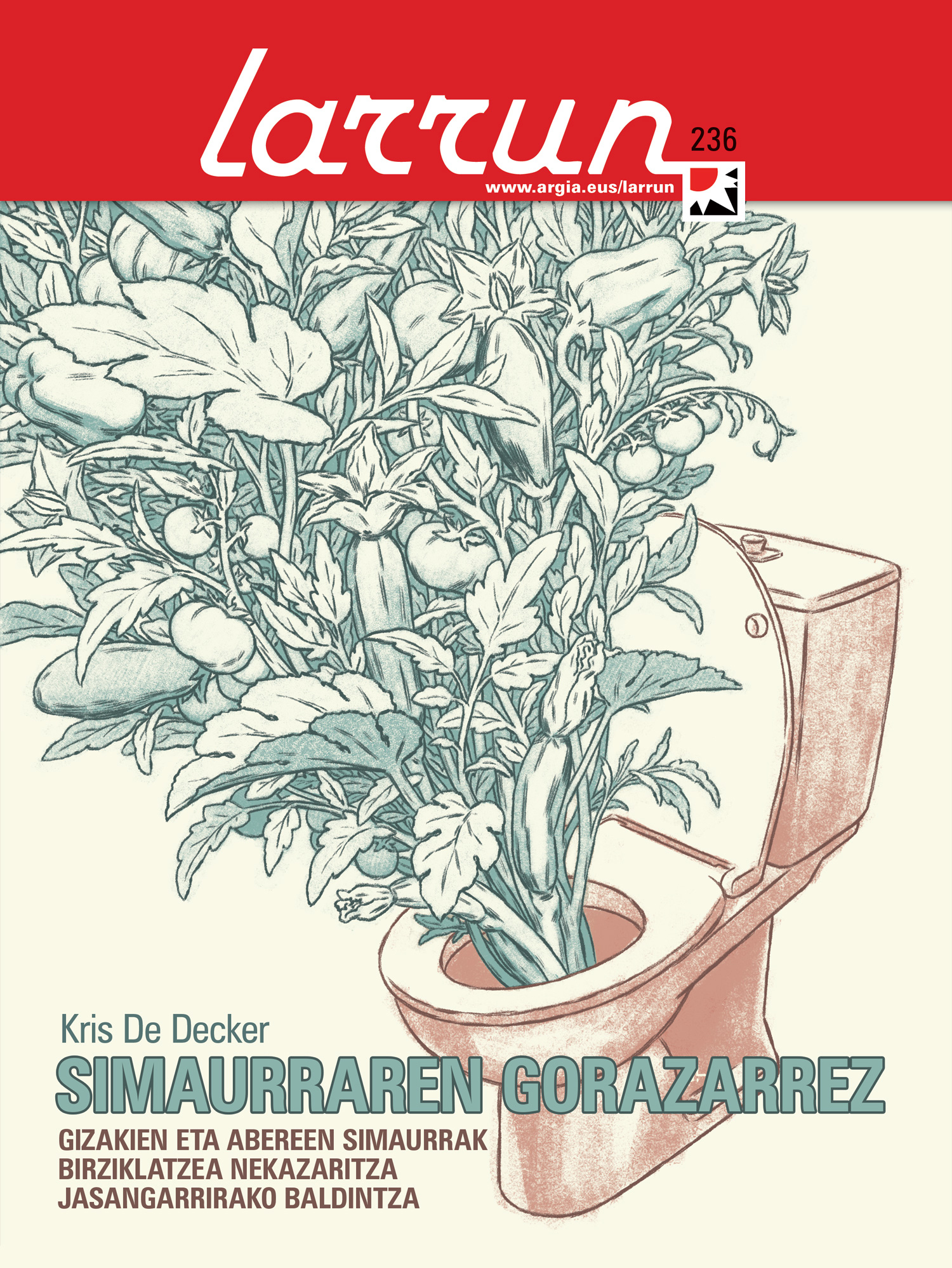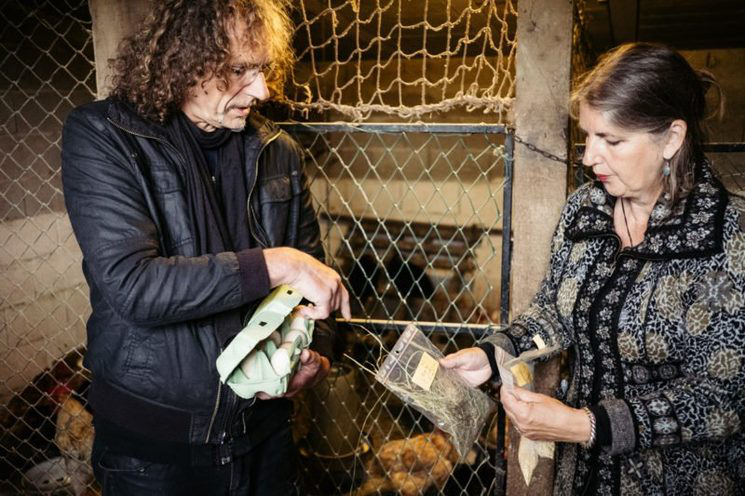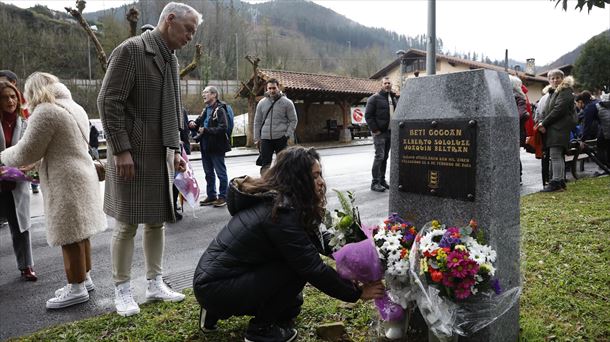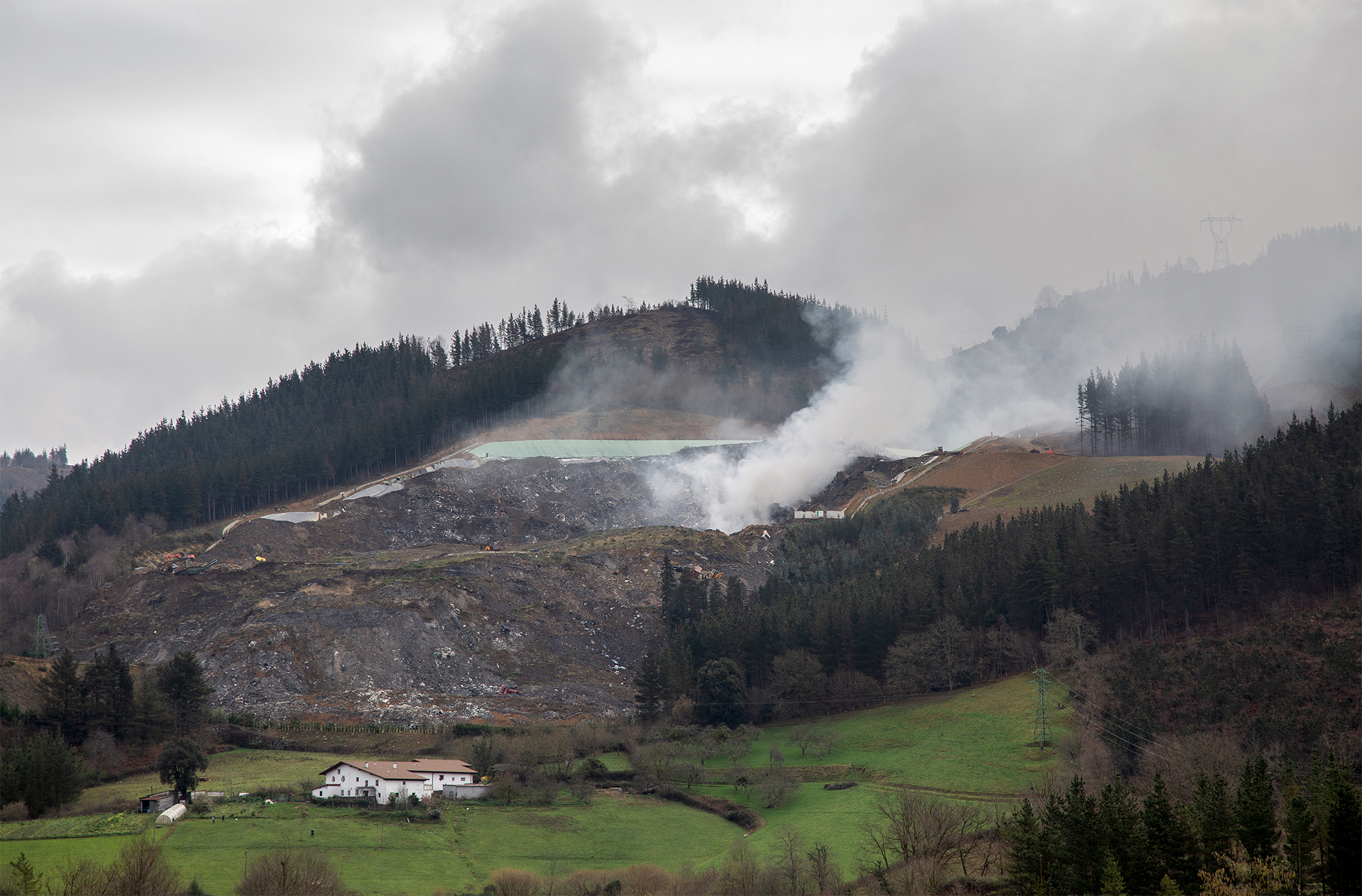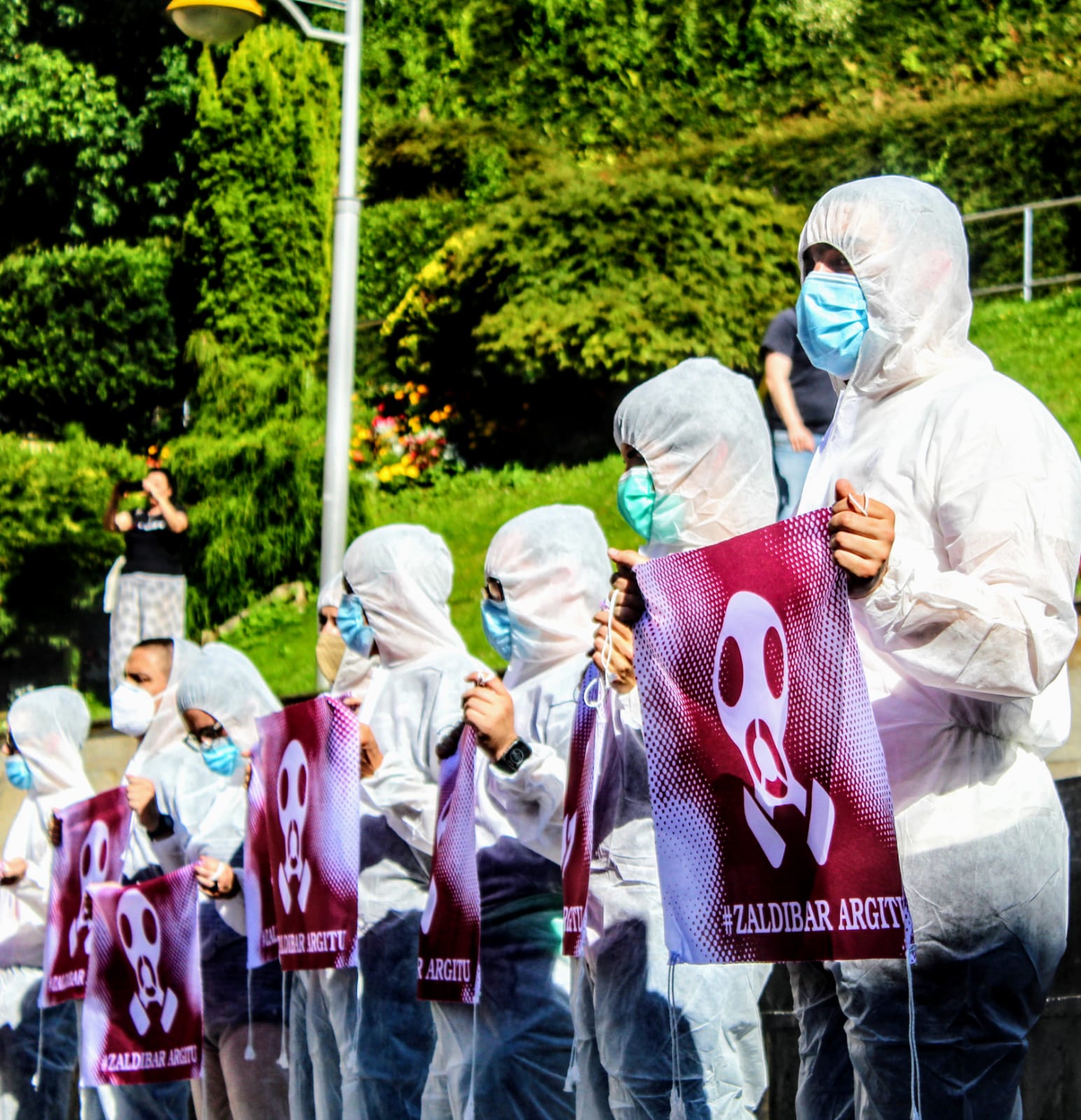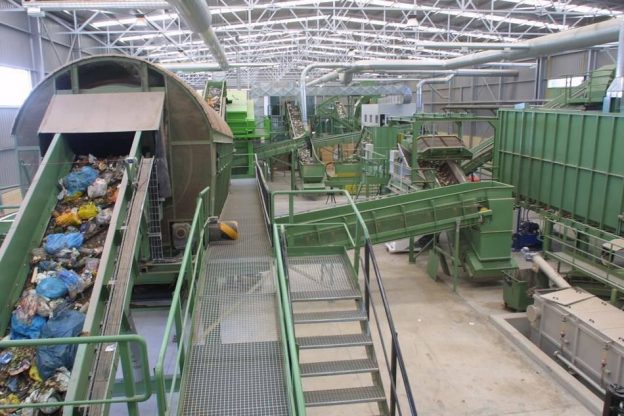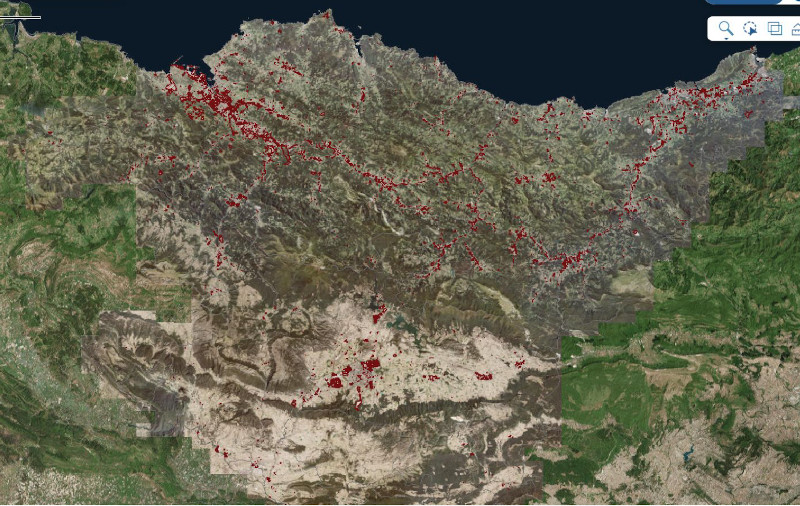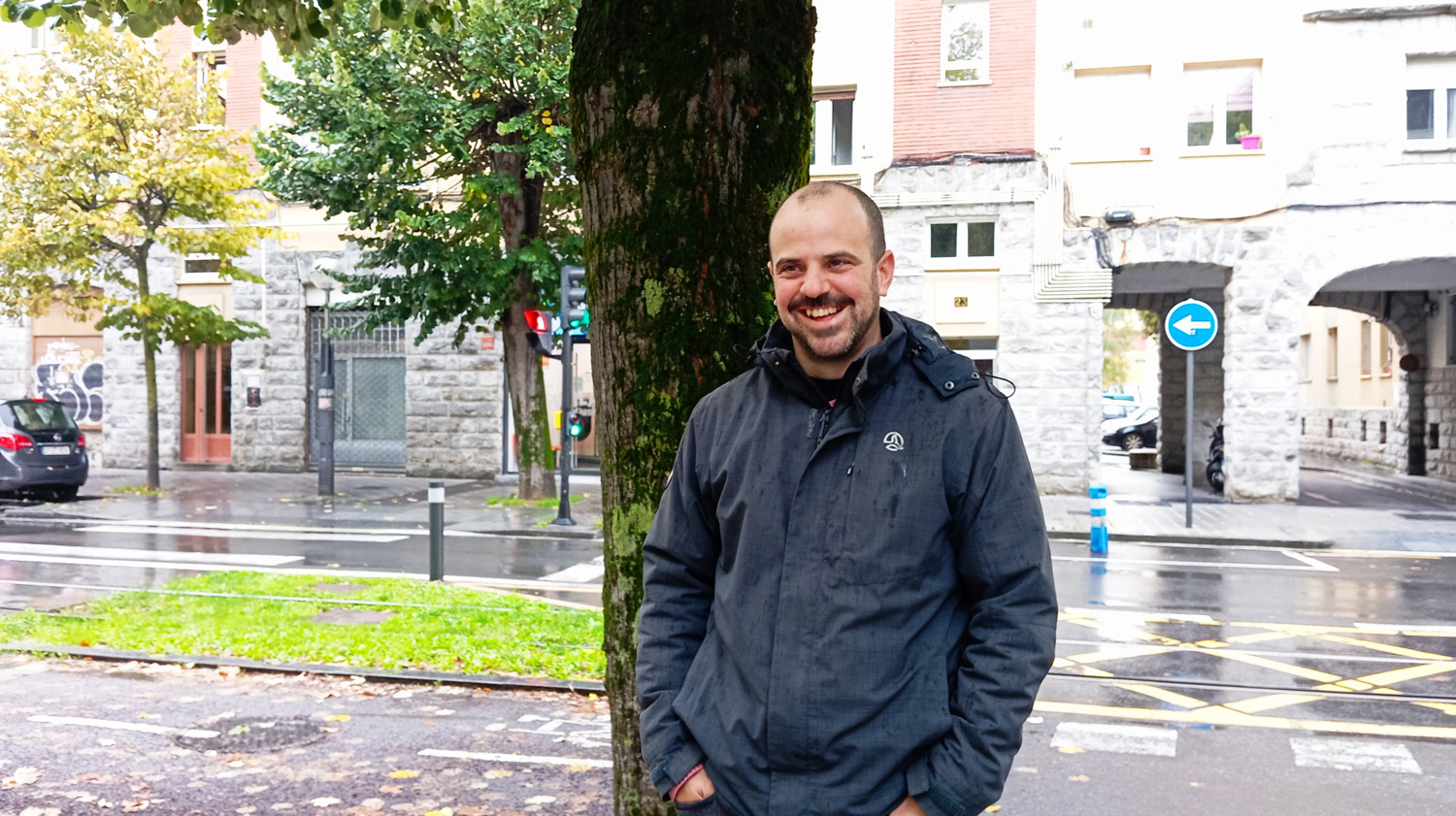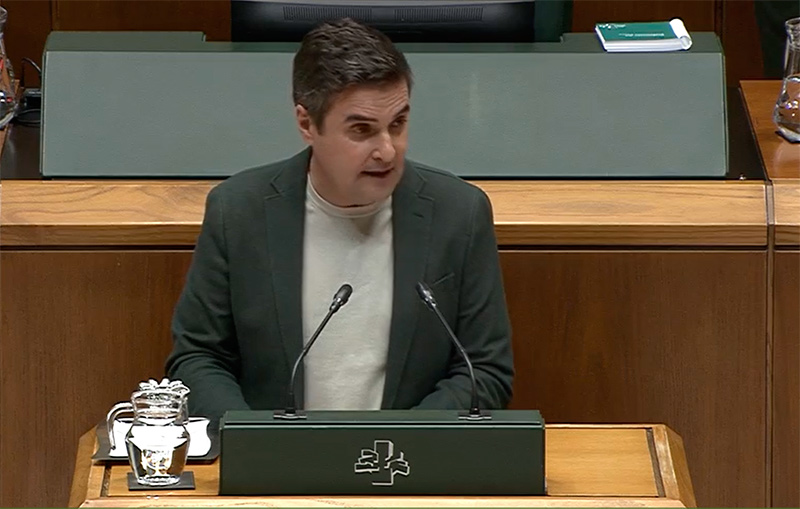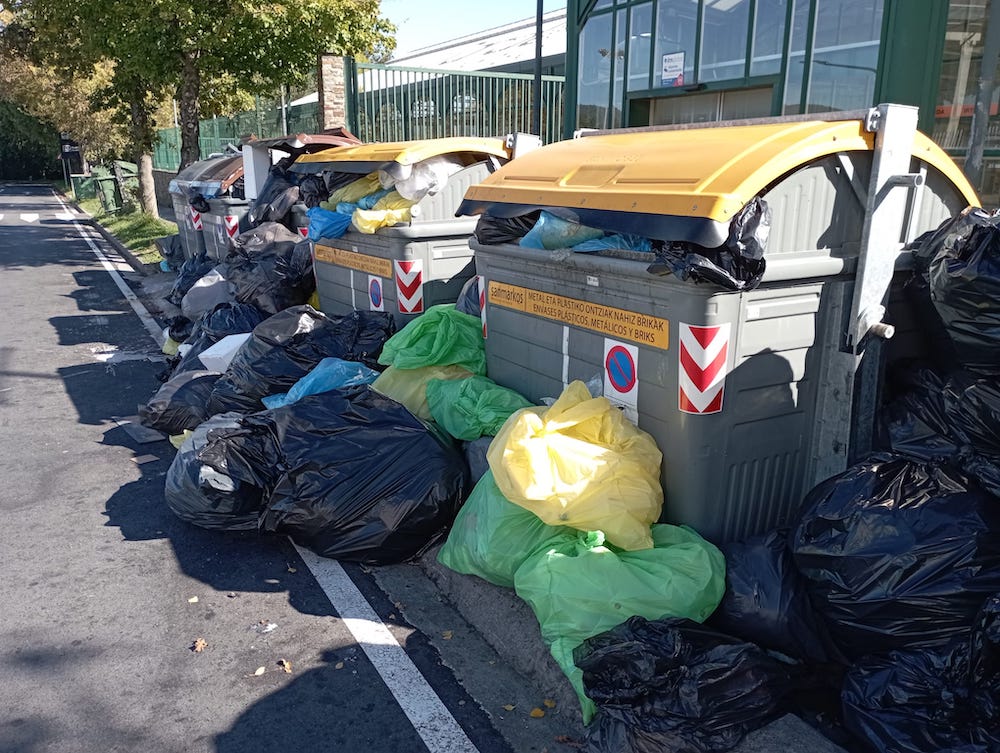In memory of manure
- Don't let the taboos, the shit, the urine, the dirt -- you get cited: people are also manure and it goes in our droppings a lot of what we've taken away from the earth. Kris De Decker offers a very materialistic synthesis of a huge sustainability problem facing humanity, of how we wasted for thousands of years the organic materials that we recycled well during a system of steelworks and bathrooms poorly designed from industrialization, making them pollutants incapable of returning to earth and turning them back into food. Dutch engineer Kris De Decker manages Low-Tech Magazine and No-Tech Magazine, providing low-tech solutions instead of current sophisticated technologies, often rescuing from industrial archaeology and sometimes updating very efficient simple technologies. Recycling animal and human dung is the key to sustainable farming shows how human manure has been collected, transported, composted and used in agriculture not only in rural areas but also in large cities until the 20th century, in China, Japan, India... and in rich Europe, the Netherlands. The studies carried out by historians have been summarized by De Decker through the eyes of an engineer, who has offered excellent progress to those responsible for planning the territory. If De Decker offers a geopolitical and macro point of view on the subject, the ARGIA reader may be interested in the subject from a more micro point of view. Many citizens, families and associations already recycle human manure on their own, without waiting for major urban solutions. We have added a reference to them from ARGIA to the juicy article of De Klerck.
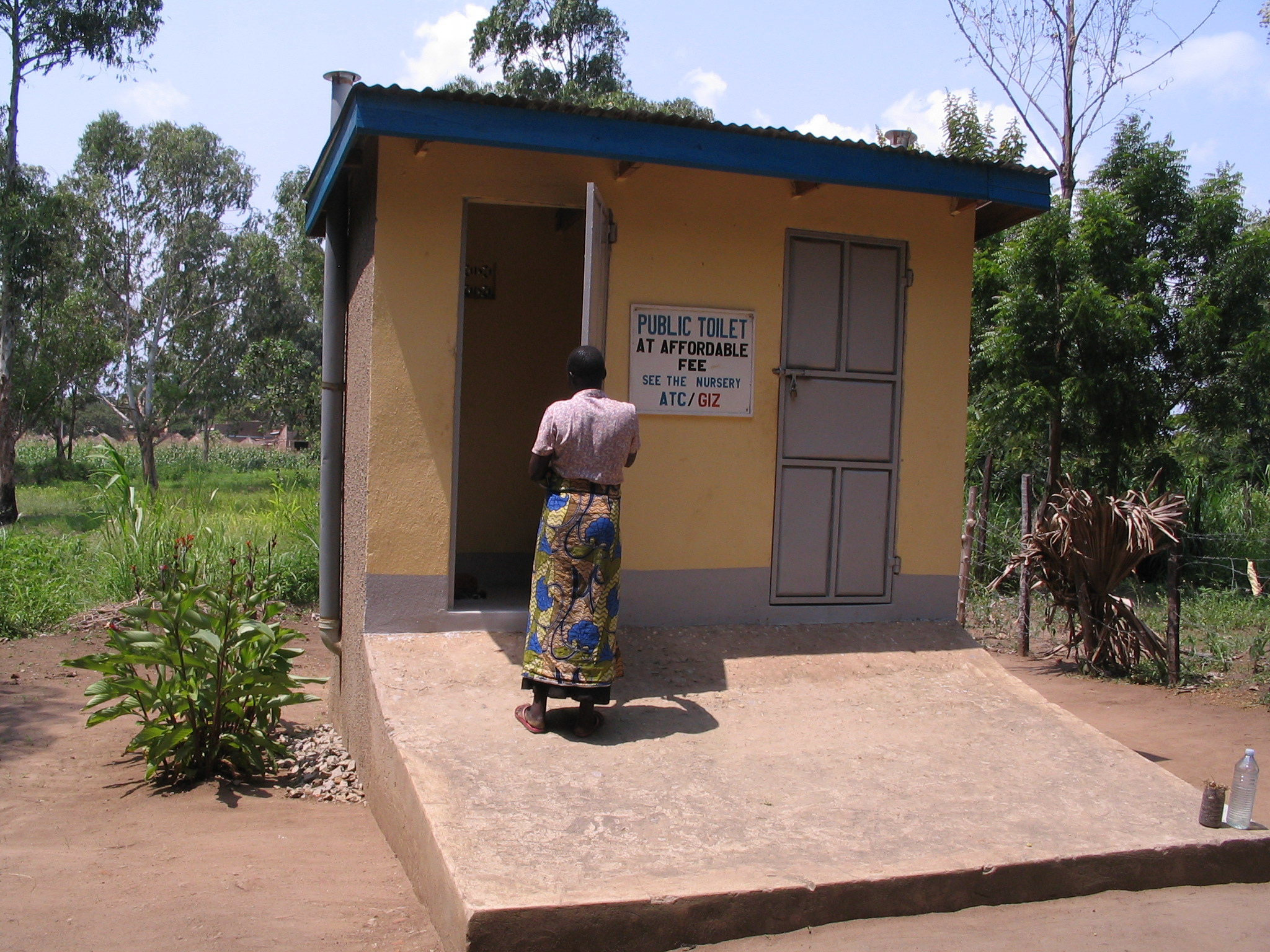
The need to recycle our droppings coming from the toilet
The impact of the toilet bomb is comfortable, but it involves an ecological disaster, stealing essential food from farmland and leaving food production in the hands of fossil fuels. For over 4,000 years, hackers and human Pyxas were considered very valuable things in China, Korea and Japan. They transported human manure by boat through the channels provided for this purpose.
Thanks to the use of human ‘waste’ as fertilizer for fields and orchards, the East managed to feed a large population without contaminating drinking water. During this time, in Europe, cities began to use open stripes in the Middle Ages. The concept was later modernized in the Netherlands at the end of the 19th century, with Charles Liernur’s sophisticated ‘vacuum sewer system’.
This innocuous toilet or comfy, rips the natural cycle of our food system. In short, it turns very important resources into waste. When we grow the plants for our food, we remove the essential food to land: potassium, nitrogen and phosphate, to name but the most important. In most human history, we've recycled these foods into our bodies to bring them back to earth, through feces, food surpluses, and carcass burial. Today we send them above all to the sea.
It is a bad and unbearable solution, mainly for three reasons. First, bringing ‘dirty’ from the sewers to the river, the lake and the sea, kills fish and makes clean water impossible. The only way to avoid this is to organise extremely expensive toilets and sewers that are supplemented by such expensive sewage treatment plants (which, moreover, do not completely solve the damage to water life).

Secondly, in agriculture we need artificial fertilizers to keep our land fertile. In 2008, almost 160 million tonnes of inorganic fertilizers were used worldwide. Without them, our areas lose fertility in a few years, resulting in the failure of food production and of the human population. The third problem is that toilets themselves use clean water to carry “away” everything that has been thrown into them.
Bathrooms suck a lot of energy
The supply of clean water, the construction and maintenance of the sewer, the treatment of dirty water (and sewage sludge) and the production of synthetic fertilizers for cultivation are intensive energy processes. Nitrogen, which accounts for more than half of the consumption of fertilizers, is found in the air, but in order to be useful it is necessary to heat and pressurize the gas. For this polluting process, energy is generated in natural gas or coal plants in China.
The impact of the toilet bomb is comfortable, but it brings with
it an ecological disaster, stealing
food to farmland and leaving agriculture in the hands of fossil fuels.
Potassium and phosphate must be removed from mines, often through meters deep, and transported later. It takes 150 million tonnes of phosphate to produce 37 million tonnes of phosphate fertilizer that we consume every year, and 45 million tonnes of salt potash to produce 25 million potassium fertilizers. Both operations require a lot of energy and pollute the environment.
Furthermore, while potassium is fairly distributed in the world and readily available – we are able to buy it for 700 years more cheaply, at the current rate of consumption – phosphorus is not the same thing. 90% of the world’s phosphate reserves are concentrated in very few countries and it is estimated that we only have affordable reserves for a period of 30 to 100 years. The reserves are much larger if we include in the calculations those at the bottom of the sea, but getting them would mean a huge amount of energy, more damaging the food and sanitation systems.
These foods from the land return from the sea to the land, both in catches of seabirds, which are very small, and in the fish and shellfish that we eat. But the waste of the fish we've eaten brings back the food they have for the earth through the sewers.
Sanitation as an expression of civilization
Toilets and associated sanitation systems are rarely questioned. It is considered a technology that leaves no room for doubt and that almost everyone looks as an exponent of civilisation, understanding that countries that do not have such systems are lagging behind. This is because we are convinced that bathrooms and the sanitation system are the only alternative to stench and disease.
Since the collapse of the Roman Empire, with its toilets and sewerage, until the end of the 19th century, the accumulation of human manure in rivers, city channels and rivers without any order repeatedly led to deadly epidemics of cholera and typhus throughout the West. This was because drinking water was contaminated by the action of the cups. People freed their emergencies on the corners of the streets or emptied the portals, behind the houses, in poorly organized septic tanks or in the nearby waters. These methods could not bring good health in agglomerated cities. The toilets and sewers remedied this, at least in the rich countries, and nobody wants to go back to the painful hygienic situation of the old days.
The basis of sustainable agriculture in China
However, even though we find it undeniable, the toilet is not the only possible answer to the problem of sanitation. There are other much more durable methods of making humans strive to keep them away from drinking water. First, the deplorable situation of the Middle Ages and the beginning of the Industrial Sanitation Revolution was only a Western phenomenon. East, at the beginning of the 20th century, the water from the Chinese rivers was potable.
The Chinese, at that time, were as numerous as the Americans and the Europeans, and they also had many cities of great population. The difference is based on the maintenance of the agricultural system based on the use of human manure as fertilizer. They picked up the shells and urine with caution and discipline, transported them afterwards - sometimes far away - and mixed them with other organic waste, composting them and then spreading them in the fields.
In this way two birds were beaten with a stone, one to not contaminate drinking water and another to cultivate an agriculture that could last forever. And it's true that it stayed for 4,000 years, much longer than our most affordable industrial fertilizer today, the potassium with which we have reserves for 700 years.
The Chinese agricultural system, which was also applied in Korea and Japan, is extensively explained in the book “The Farmers of Forty Centuries”, F. H. Report of a trip by the American researcher of King Earth. The book was published in 1911, at the same time as the Haber -Bosch process was discovered, which would be a cheap artificial nitrogen fertilizer, the base of industrial agriculture.

Kinge dedicated a full section of the book, available on the Internet, to explaining how human manure was collected and distributed in Asia. Joseph Needham also tells the method in volume VI:2 of his work “Science and civilization in China”, citing other earlier sources. More recently, Duncan Brown mentioned the Chinese system "Feed or Feedback: Agriculture, Population Dynamics and the State of the Planet."
Merchant manure, treated manure
At King's time in China, 400 million people lived there; for example, Europe was 400 million and the United States was 100 million. China's 400 million people were wrapped in terracotta jugs, lid jugs that didn't pass their air. They picked up the works of all the houses, as in the small towns of the countryside, in the big cities. Some cities had special networks of canals and boats built especially for this purpose, as seen in the photos. This was the case, for example, in the city of Hanz-Wuchang-Hanyang, which had 1.8 million inhabitants in 6.5 square kilometres.
Over 182,000,000 tons of human manure were collected annually in cities and towns in China, with 450 kilos per person per year. Through this aid, a total of 1,160,000 tonnes of nitrogen, 370,000 tonnes of potassium and 150,000 tonnes of phosphate are returned to land each year. In Japan in 1908 they collected 23,850,295 tons of human manure and returned it to land.
Shanghai transported and distributed the efforts of its inhabitants from a specially designed network of canals using hundreds of boats. This sale moved 100,000 dollars a year. Human manure was considered a valuable raw material. In 1908, a Chinese businessman paid the City Hall $31,000 – which today would be more than 700,000 – for collecting 78,000 tons of human manure in the municipality and selling it to the baserritars of the area.
In Japan, being much more urbanized than China, tenants paid less rent if they left their owner with better quality manure. King told how from Tokyo and Yokohama they carried human manure “sometimes behind the backs of men or animals, but most of the time in large man-drawn chariots, with eighty boats covered with wood tops of sixty pounds or more.” In Japanese rural areas, it was quite common to see cabins with invitative symbols for travellers to enter and drop. This was then used by the peasants to pay their fields.
This habit of recycling human excrement found in the villages of Asia caused nausea to some of the visitors. The Portuguese Fernam Méndez Pinto, for example, wrote in 1583:
“You should know that in this country there are many who buy and sell the works of men and do business, and that it is not such a small business among them, that there are many who get rich and lead a beautiful life. Those who buy that walk through the streets beating the censuses, as our traperos do, letting people understand what they want without words, because the thing itself is disgusting. I would like to add that as this merchandise is so appreciated and so much is being bought and sold, you can sometimes see in a seaport two or three hundred sailors transported.”
The 4,000 year closed circle system was destroyed with the arrival of artificial fertilizers. In the first decades of the 20th century, they were imported by the West. Today, China is, for example, the largest consumer of inorganic fertilizers, with 28% of global consumption. As a whole, Asia uses more than half of the world’s artificial fertilisers.
Collection of human manure in Europe
The efforts of the people had also met in Europe, albeit with less time and on a much smaller scale. In the second half of the 19th century, agriculture lost its hegemony in Europe, migration to cities accelerated and the problem of sewers became much more serious.
At the same time, health experts realized that cholera and typhoid came from the ingestion of contaminated water. Agriculture, as animal manure was becoming more and more scarce, was seen as both problems could be solved at the same time. The first system was implemented in several countries and cities, in most cases in the English night soil collection, as in the English of the time it was called the human fertilizer, because it was a night business, and evokes the Asian method.
Boxes and fins were stacked in wooden baskets placed under the toilet chairs to prevent smells from being mixed in the ground, in the ashes or in the coals. The search engines of “night land” regularly carried the “merchandise”.
The full containers were emptied in the cart and returned immediately, so the cleaning of them corresponded to the users, or the full containers could be loaded in their entirety in the cart, providing the users – and the cleaning collectors – with the corresponding voids. They put empty vessels under the toilet chairs and carried the manure either on carriages or on horseback to the city pick-up area. Here they turned it into compost for agricultural use.
Unfortunately, the collection and transport of this waste in Europe was not as effective and hygienic as in China, Korea or Japan. The system worked properly if airtight containers were used, but this was not always the case. When open carts were used, transport cleared trash and bad smells. The carriages threw their clothes when they were thrown over the stairs and also over the carriages. In addition, the collection was not carried out frequently enough, especially in the poorest neighborhoods.
However, the wooden cubes system was a step forward in relation to the chaos that had hitherto been taking manure in Europe. During the Middle Ages, the so-called Simaurzain [dung-farmers] received the animal and human feces and sold them to the baserritars for use in their fields. The problem was that manure workers had to collect a minimum amount of manure in order to be able to sell a carriage. Duncan Brown gathers Carlo M. Accurately written by the historian Cipolla about the situation:

“The most tragic aspect of this business is that these collectors, who were in the streets, had in their houses the manure they had found until enough was accumulated to sell.”
There were exceptions, particularly in Flanders, where, since the Middle Ages, a excrement collection system had been set up, reminiscent of the Chinese method. In the Antwerpen-Antberes environment, the management of organic manure (human feces, manure from urban mares, pigeons, carcass sludge and food debris) had become an important industry for the sixteenth century. XVIII.ean there were department stores on the banks of the Shelde River to collect the waste it had brought from Dutch cities by boat.
Charles Liernur absorbent sewers
The second method was invented – and patented – by the Dutch engineer Charles Liernur in 1866. Its absorbent steels system combined the comfort of the current steelworks with the advantage that former manure collectors brought to the ecological management of fertilizers. The bathroom of each house was attached to the infrastructure of the small diameter tubes that extended down the subsoil, and the pee of the mondadients quickly left the house as soon as the toilet works were finished.

system is still used in trains, aircraft
and boats.
A fundamental difference with current technology was that the Liernur system did not use water as a means of transport, but atmospheric pressure. So I would avoid mixing manure into the water, without losing its fertilizer value, which was exactly what Liernur wanted. On the other hand, the sewers that the absorbers made the manure wrecks disappear, which in transporting buckets full of poop and urine prevented people from sleeping. This was a significant step forward, even with regard to the system used in Asia.
A number of Dutch cities were equipped with the Liernur system: Leiden in 1871, Amsterdam in 1872 and Dordrecht in 1874. At first there were a couple thousand houses connected to the absorbent sewage system, but in Amsterdam they have spread widely ziren.XIX. At the end of the century, 90,000 inhabitants of Amsterdam were connected to the Liernur system, about 20% of the population. As in Amsterdam, the Leiden system worked for 40 years. On a smaller scale he was also included in Prague (Czech Republic), Trouville-sur-Mer (France), Hanau (Germany) and Stansted (England). He remained in Trouville from 1892 until 1987. At present, this method remains the one used by the toilets of ships, trains and aircraft.
The French adapted the Liernur system to its style, called Berlier. In 1880 he was tested in Lyon, where he transported manure up to four kilometers. In 1881, a five-kilometer network for testing was established in a neighborhood in Paris. France worked seriously on these tests, taking care of the transport by glass tubes at some points. The Berlier system, technically better than that of Liernur, did not fail: using this system, the thousands of soldiers in the barracks of the Pepiniere House were the only ones who were not infected by a typhus epidemic among the soldiers in Paris.
Arrival of the bathroom today [watercloset]
Despite technical success, the Berlier system was never advanced from the testing phase. The Dutch Health Council, after the success achieved in Amsterdam, proposed in 1873 to extend the Liernur system to the whole country, but it was not carried out. Liernur designed plans for other European cities (Paris, Berlin, Stockholm, Munich, Stuttgart and Zurich) and also for American Baltimor, but they never came true.
There are several reasons why pneumatic systems have not become standard sewage systems. For a start, the modern water bath and water supply arrived. In the Netherlands, more and more people connected water to the Liernur system, diluting urine and nozzles in water and reducing their agricultural value.
But before this happened, the sale of manure had not yielded the expected benefits. Health experts warned that these benefits should not be the priority of the hygiene system, but the problem was that Liernur itself presented economic benefits as one of the main advantages of its system. It attracted investors who dropped out of technology as soon as they started to lose money.
As in the Netherlands, the size of cities across the West was a growing problem. The logistics generated by the tendency of the giant city to feed on distant dwellings surpassed the old manure collectors and the new more sophisticated methods. Absorbent sewerage received the last kick in 1910 when the method of cheap production of inorganic fertilizers was discovered, leaving the need for agriculture to be “solved”.

As cities began to install pipelines to collect rainwater, the next logical step was the connection to the same wastewater sewage network in the bathrooms. It was a fundamental step backwards: human remains were taken to rivers and streams, and not always a few kilometers further away. 70 more years in the rich world for the treatment plants to spread enough.
Just three options for the future
If we want to restore the natural cycle of our food supply, we have only three technological possibilities. First of all, we can develop a modern sewer model using compost toilets in which all the human tasks generated by each household are collected together with other organic waste. Spades can go to a special container that is emptied once a year (this system is already used in some neighborhoods in Holland and Sweden, where people use toilets that collect special urine).
Secondly, we could develop a new variant of Liernur or Berlier systems to automatically collect stool feces, but without using water [very different from the current model]. Absorbent sewage systems have been partially used in large housing buildings since the 1960s and 1970s. USA, Britain, Australia, Germany, Maldives, South Africa and the Middle East [here's the overview of this system on Wikipedia: https://en.wikipedia.org/wiki/Vacuum_sewer#Project_Examples]. The absorbent sewer system costs half of the conventional sewer system. Construction is also faster and its maintenance is easier, with much smaller diameter conductions in the subsoil and at a lower depth, with a much narrower trench on the street floors.
There is a third techno arrangement, but it is much more expensive than the two mentioned above: to use as fertilizer the waste leaked into the water in the current sewers. Basically, a new layer of expensive and complex infrastructure is added to the already very expensive and complex system. In addition to drying the diluted residue in water, it should also be cleaned, as many other wastes, including toxic waste, such as house and factory waste, are deposited in human manure.
What we have to stress is that if we leave our mouths and shells out of the sewers, we can also eliminate the entire sewage system that carries water, saving a lot of cost and energy. There are feasible alternatives for the evacuation of rainwater, mainly through the reduction of waterproofed soils, and for the reuse of grey water from on-site kitchens.

Composting of human manure
Poop and human spice should be treated as fertilizer. It was also known by those who wrote about agriculture in China a long time ago, as they warned that untreated human manure “burned and killed plants, crushed shoots and hurt people’s hands and feet.” Today we know you bring even more dangerous health problems. F. Mr H... King and Joseph Needham long ago praised the Chinese effort to compost, mixing the efforts of humans with those of domestic animals. However, Duncan Brown was more critical of composting techniques. Health improvements achieved through the retention of drinking water in China were often turned into losses due to the diseases spread by the harvest.
You always have to composte before you fertilize, and this can be done in two ways. Being the first -- slow composting -- a technique of self-elaboration, Joseph Jenkins -- who invented the word humanure [human manure] -- explains in the famous book Humanure Handbook. Slow composting occurs at low temperatures and must remain in temperate climates for about a year. To ensure safety, most say that the compost that is obtained, odour free, is only used in plants that do not touch fertilizers and food, such as fruit trees, or that are not eaten, such as flowers, house plants and others.
The second method is to compress at high temperatures; it goes much faster and the compost obtained can be used in plants of any kind. This is an industrial process that has been used successfully in many countries for years. Another interesting thing is that in the first step of this process electricity is produced, one more improvement for the sustainability of the system as a whole. Since 2005, the Dutch company Orgaworld has been composing the diapers of the elderly and children, along with a lot of other organic waste. This high-tech process produces excellent quality compost in six weeks, without pathogens, drugs or hormones. The company has built two new factories in Canada and Britain, which are about to build more.
Can we feed the planet with manure fertilizer?
Can we produce enough natural fertilizers to replace synthetic nitrogen and the potassium and phosphates obtained from mines? F. H. According to data provided by King, an adult produces 1,135 grams of poop and urine per day. How much nitrogen, potassium and phosphate do you have? According to your diet. Taking those from China 100 years ago as a reference, King offered several results: 2.9-6 kilos of nitrogen per person per year, 0.9-2 kilos of potassium and 0.4-1.5 kilos of phosphate per person per year.

The world ' s population is currently estimated at 6.8 billion. Let’s admit that everyone’s diet can be equated with the one they ate in China at the beginning of the 20th century and that the calculations offered by King bring the highest amounts closer to the current diet – it’s hard to find current data. This would mean that the entire world population can produce 40.8 million tonnes of nitrogen, 14 million tonnes of potassium and 10.4 million tonnes of phosphate per year. Is this enough to eliminate the need for artificial fertilizers? At first glance, no. This is the production of artificial fertilizers today:
- 99.9 million tonnes of nitrates, more than twice as much as can be generated among all humans (40.8 million tonnes).
- 37 million tonnes of phosphate, almost 4 times more than human beings can generate (14 million tonnes)
- 25.8 million tonnes of potassium, equivalent to 1.8 times what humans can produce (10.4 million tonnes)
Appropriate use of livestock manure
However, manure production by humans has long been “outsourced” to farm animals. Many artificial fertilizers are also used to feed livestock. These animals produce more manure than the population of the planet. In 2004, it was estimated that 125 million tonnes of nitrogen and 58 million itone phosphate were carried with them (there is no amount of potassium, so it will not be discussed later). Nitrogen in human manure by 3 and phosphate by 6.
Animals are of little importance to the economy of peas in China, but European farmers in the Erd iEra had largely livestock manure. Livestock manure was never wasted. Joseph Needham comments to Fussel:
“XV. Between the 17th and 18th centuries manure is one of the main concerns of Europe’s peasants, both large and small. They were striving not to spoil any manure, not even the smallest, because the success of all their crops was intimately linked to the amount of manure they were willing to use. The works of Hercules and five were willing to accumulate enough shit.”

We have every reason to reduce our consumption of meat, both for our health and for the environment, with livestock being the main cause of the reduction of forests, which leads to the deterioration of soils. However, if we do not want to completely eliminate meat consumption, the least we can do is “do the work of Hercules and do five to accumulate the necessary amount”.
In doing so, we would be able to get rid of the effort to produce more and more artificial fertilizers, but at the same time we would be able to curb the terrible consequences of the discharge of 91 million tonnes of nitrogen and 49 million tonnes of phosphate into the environment each year in animal droppings. Most of them are transferred without any treatment, illegally, or in suffocating doses in the peri-urban areas as cheap waste management techniques.
Food waste, fertilizer management techniques
There is another source of natural fertilizers that is being wasted: food waste. In this case, we also turn a precious resource into garbage. Food remnants can be used to feed animals, such as pigs and others, increasing the durability of meat production. But we can also feed the plants. Of all the 'food leftovers' produced in the United States, only 3% is recycled, the rest goes to landfill, producing a lot of greenhouse gases.
It is also possible to reduce demand, as one of the main problems with fertilizers is currently excessive consumption. Because artificial fertilizers are cheap, baserritars prefer to feed their crops with excess fertilizer than risking crops for little use. As a result, many fertilizer foods are wasted by soil erosion, the discharge of rainwater and leachate, thus contaminating groundwater, streams and seas, as these lost components do not pass through the sewage treatment plants.
It was very different in ancient agriculture in China and in Europe in the Middle Ages. Since there was never enough fertilizer left, the barbarians used it by heart. With more responsible techniques, today's farmers would also get the same crops with much less fertilizer. Crop rotation, crop combination and green manure, all of which are old techniques applied today in organic farming, can further reduce the demand for fertilizers.
Food balance
We summarize all the information in a second. On the one hand, we have livestock and people, which together generate 166 million nitrogen and 72 million tonnes of phosphate. Most of them are wasted, causing an ecological disaster.
On the other hand, our factories produce 99.9 million tonnes of artificial nitrogen fertilizers and 37 million tonnes of phosphate. This only increases pollution and exploits a lot of energy with totally useless operas. The expected increase in human and livestock numbers, without referring to the proliferation of energy crops for the production of biofuels, will further increase the production of both artificial fertilizers and biological fertilizers, further worsening the global problem.
It is quite possible that mankind has ended a time when humanity could be satisfied without inorganic fertilizer. In short, artificial fertilizers have represented a significant proliferation of the population in the twentieth century. However, this should not be a problem. Like animals, human manure carries with it food from inorganic fertilizers, as we all eat to a large extent food grown with these inorganic fertilizers. It is estimated that humans have already doubled the amount of food that the planet's ecosystem contains. So the problem is not that we produce inorganic fertilizers, the problem is that we don't recycle them.

The logistical challenge
Even if only livestock manure is taken into account, there are enough manure to keep almost 7 billion people. If there is no tobacco in the use of animal manure, why do we not use it? Of all these manure animals produced, farmers did not use in the fields, in the 1996 calculations, but 34 million tonnes of nitrogen (28% of total consumption) and 8.8 million tonnes of phosphate (15%). In other words, more than artificial nitrogen used instead of manure and artificial phosphate.
This is the result of an industrial and intensive system of meat and dairy production on a global scale. In many countries, animals devour fodder that forms at the other end of the world. That is why, if a circle were to be formed, we would have to make manure return to the countries that have sent us grass. FAO has written:
“Livestock and fodder production in the same continent generates large imbalances that hamper the size of industrial food production and the possibilities for manure recycling from geographical concentration. Expensive labour and transport costs often limit the use of manure as organic manure in the vicinity of production sites.”
The same applies to human manure. Like livestock, people are also geographically concentrated in the large, homeless cities around them. And like livestock, we too often feed on foods produced far from where we live. This means that if we decide to collect human manure, we will have to return food from where it has been consumed to where it has been produced. Therefore, the recycling of these foods would entail the need to organise a great logistics by means of trucks, trains and boats (or a large piping system) for the transport of manure around the world.
We do not mean that every kilo of manure should be returned from our manure to the places where food has been produced, as it would be impossible and meaningless. But the important thing is that there must be a balance between imports and exports of food. Countries that export food (others) can also decide to import food, reaching the same result and also gaining diversity in the diet. What we basically need is a sophisticated food accounting system.
Lehengai anitzekin papera egitea dute urteroko erronka Tolosako Lanbide Heziketako Ikastetxe Integratuko kimika industrialeko ikasleek: platano azalekin, orburuekin, lastoarekin, iratzearekin nahiz bakero zaharrekin egin dituzte probak azken urteotan. Aurtengoan, pilota... [+]
The City Hall of Donostia-San Sebastián announced at last Thursday’s plenary session that it will increase the waste rate by 26.5% from January 2025, claiming that Waste Law 7/2022 obliges this. Eguzki, for its part, has denounced that the law only applies in terms of costs,... [+]
August is the holiday month for many people, including those who rule. And yet it is common to take advantage of the month of August to deal with some issues without much noise, albeit of great importance.
This is what is happening with the project to centralize sludge... [+]









